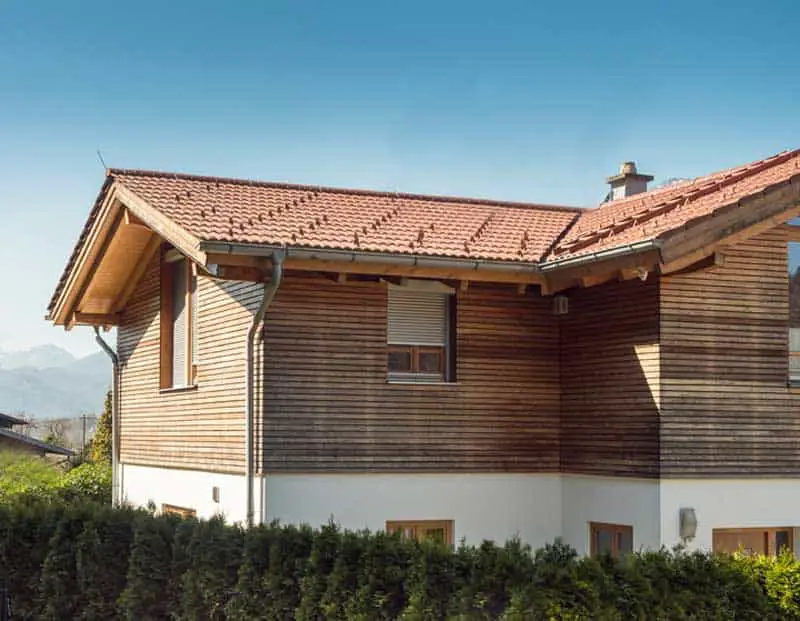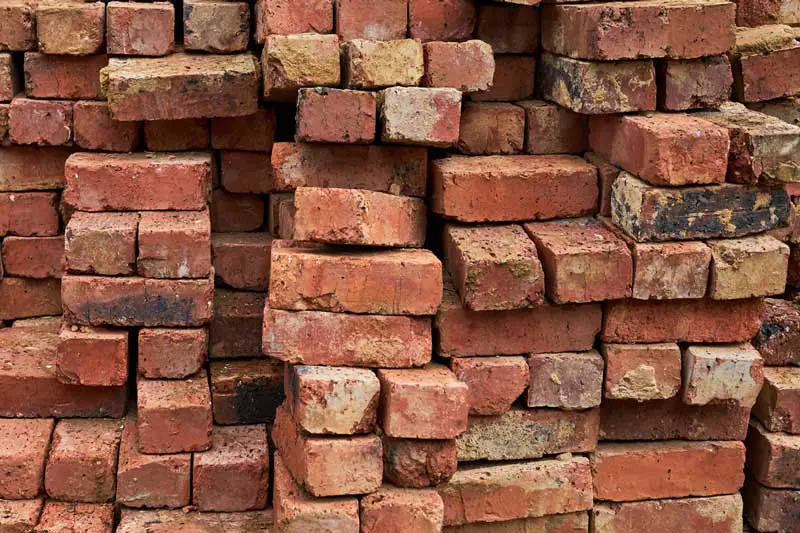
When choosing which building materials to use on a project, it’s becoming more and more important to consider how sustainable and environmentally friendly they are. There are many advantages to using lime as a binder in mortars and plasters. But are lime building materials environmentally friendly?
Lime-based building materials such as mortar, plaster and render are far more environmentally friendly than cement and gypsum alternatives. Lime is burnt at a much lower temperature than cement in the kiln (900°C compared to cement at 1300°C). This causes around 20% less carbon dioxide to be released in manufacturing. Unlike cement, when lime is used on a building, it absorbs CO2 over its lifespan to harden. This means over their lifetime, lime mortars, plasters and renders can be carbon neutral; some studies have found they can even be carbon-negative.
How Are Lime Building Materials Environmentally Friendly?
There are several reasons why lime is a more environmentally friendly building material compared to cement and gypsum. It doesn’t create any toxic byproducts during manufacturing. In addition, lime is biodegradable and can be recycled. And this is before we even get to lime’s ability to absorb carbon dioxide out of the air. Let’s take a more detailed look at the environmental benefits of using lime in construction.
Lime absorbs CO2 out of the air as it cures
The main environmental benefit is its ability to absorb carbon dioxide out of the air. If you aren’t aware, carbon dioxide is a leading cause of climate change. Lime’s ability to absorb carbon as it cures helps to offset the carbon it takes to quarry and burn the lime in a kiln. For this reason, lime building materials are often considered carbon neutral. One study found that building with lime produces up to 97% less CO2 emissions than building with cement alternatives.
So how and why does lime absorb carbon dioxide? Lime is made from calcium carbonate, found in rocks such as limestone and chalk. These rocks are heated in a kiln, releasing carbon dioxide and leaving calcium oxide behind (quicklime). The calcium oxide becomes calcium hydroxide when quicklime is slaked (mixed with water). This is the material you use for pointing and plastering when mixed with various aggregates.
Calcium hydroxide (lime putty or fat lime) is the binder for mortar and plaster and sets via carbonation. Carbonation is a chemical reaction of carbon dioxide, and this process effectively turns calcium hydroxide back into calcium carbonate, which absorbs carbon dioxide (CO2). This is chemically the same material that was removed from the quarry. This process is what’s often called ‘the lime cycle’. The carbon given off in the kiln gets reabsorbed as it cures and turns back into stone. Which is pretty neat if you ask me!
Related article: What Are The 3 Main Types of Lime Used in Construction?
Lime can be recycled
Because lime cures by carbonation, turning it back into its original form (calcium carbonate stone), it can be recycled. You can take old crumby lime mortars and add some fresh lime putty and aggregates and reuse it. The important thing to note here is that fresh lime must be added. Old lime has already carbonated, so it would not bind the mortar well without adding fresh lime, which can still carbonate, causing the mortar to harden.
Using old mortars in this way helps to maintain authenticity and can help you to match old mortar to new mortar. We effectively use old crumby mortars as an aggregate to mix with fresh lime and sand. This helps reduce the need for fresh aggregates like sand to be quarried, helping to reduce emissions.
Lime doesn’t damage masonry like cement does
If you have ever worked with lime, you may have noticed that the masonry is usually in excellent condition. This is because lime is soft, which helps to protect masonry and other building materials. If a structure such as a wall has been damaged or fallen over, you can scrape the lime mortars off the masonry and reuse it. This is in massive contrast with cement, which is extremely hard. You will most likely damage the masonry by trying to remove the cement.

You cannot easily remove old cement. This is why all fresh building materials are required if a cement structure is damaged. With lime, you can remove any old lime and rebuild the wall or structure with the original materials. This not only looks great, but it also restores the authenticity and original appearance of the building.
Reusing and recycling old masonry saves on emissions by eliminating the need to make new bricks, blocks or stones. In addition, it reduces emissions caused by needing to transport fresh building materials from a builder’s merchant to the site.
Lime mortars, plasters and renders are biodegradable
In addition to the fact that old lime building materials can be reused to make fresh ones, lime is biodegradable. Lime turns back into calcium carbonate when it cures, which naturally occurs in the environment anyway in rocks such as limestone and chalk. This means lime building materials don’t create harmful and toxic byproducts like cement. Old lime mortars can even be crushed up and spread over gardens to help reduce acidity and help increase soil aeration. Over time, the lime will just become a part of the soil.
Related article: What are the Differences Between Lime and Cement?
This starkly contrasts with cement, which often ends up choking landfill sites. Although it can be recycled into aggregates like lime, this is often a much more costly process. Lime can be scraped off old masonry, whereas cement needs to be crushed and graded.
Lime Is Compatible With Eco-Buildings And Low Energy Sustainable Materials
As people become more aware of climate change and the impact the construction industry has on the environment, sustainable building is becoming more popular. Many eco-builds use materials such as straw and mud. Lime can be used with these materials as a mortar, plaster or render to help protect them from harsh weather. Lime building materials will allow the building to breathe and flex without causing any damage. Overall, this will lead to excellent longevity.

Eco-builds often require plaster or mortar to have very good flexibility and breathability. This is because they are made using natural materials that can flex and move. In addition, lime will rarely create large cracks like cement, reducing the possibility of water ingress, which can cause natural materials like straw to decompose. Lime is one of the best solutions to provide these necessary characteristics for eco-building.

